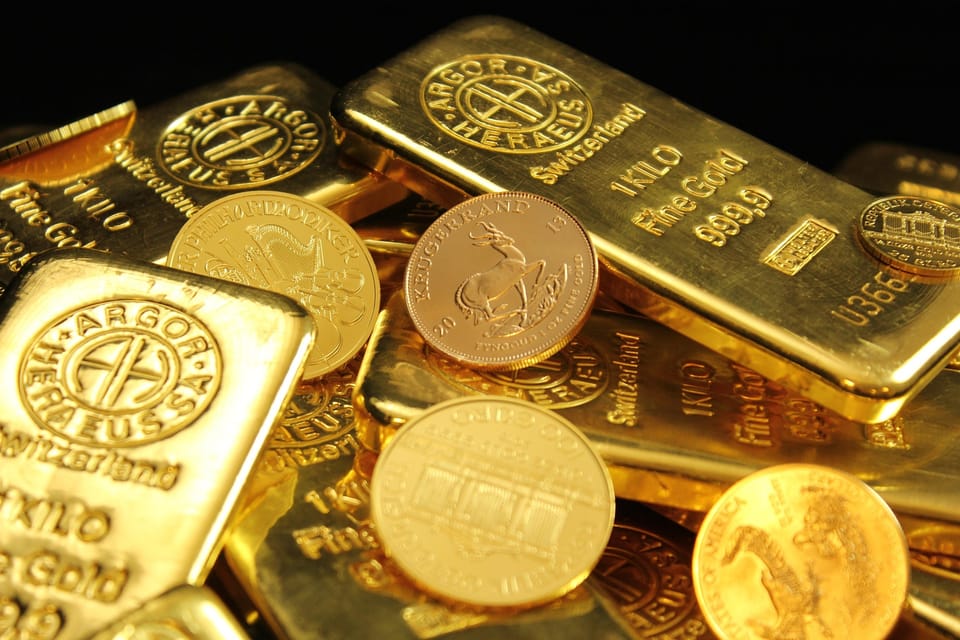When Gold Goes Up, Is It Really Gold — or Just the Dollar Going Down?

When the price of gold rises, many investors assume something fundamental has changed about gold: increased demand, a looming crisis, or market momentum. But gold doesn’t always rise because it becomes more valuable in real terms. Sometimes, the price of gold increases simply because the currency it’s measured in has weakened.
This distinction — between a real change in gold’s value and a change in the value of the currency — is critical, and rooted in foundational economic theory. Yet it’s often misunderstood, even by otherwise sharp observers.
Let’s break it down.
A Price Is a Relative Measure
In economics, a price is always relative. When we say “gold is $2,500 per ounce,” we’re expressing a ratio: how many U.S. dollars are needed to obtain one ounce of gold. If that price goes up, there are two possible explanations:
- Gold has become more valuable (increased real demand, reduced supply, etc.)
- The dollar has become less valuable (its purchasing power has declined)
In reality, both can happen at once. But inflation and currency debasement alone can raise gold’s nominal price even if nothing about gold changes at all.
This leads to a fundamental economic truth:
An asset’s nominal price can increase even if its intrinsic value remains constant, if the unit of account (currency) loses purchasing power.
Common Objection: "Isn’t It Just Supply and Demand?"
A natural response to this idea is:
“If the price of gold goes up, that just means demand went up. It’s all about supply and demand — not the currency.”
At first glance, this seems intuitive. After all, demand does influence price in any market.
But this line of reasoning conflates nominal price changes with real value changes, and overlooks how the currency itself — the measuring stick — can move. In a fiat monetary system, prices can rise across the board even if supply and demand for individual goods remain unchanged. This happens not because those goods are more desirable, but because the purchasing power of the currency has declined.
Inflation — whether driven by monetary expansion, policy shifts, or erosion of confidence — causes a general rise in prices, including gold. In that case, gold’s higher nominal price is not a reflection of increased demand, but of a weaker dollar.
A Simple Example: Doubling the Money Supply
Let’s say:
- The supply of gold stays the same.
- The demand for gold stays the same.
- But the U.S. government doubles the money supply overnight.
What happens?
Every dollar-based price would begin to rise — not because every good became more valuable, but because the dollar is now worth less. It takes more dollars to buy the same things, including gold.
This is textbook monetary inflation. Gold’s price in dollars rises, but not because of a real change in demand. It’s the measuring stick that changed, not the thing being measured.
This aligns with the Quantity Theory of Money, expressed in the classic economic identity:
MV = PQ
(Money Supply × Velocity = Price Level × Quantity of Goods)
If money supply (M) increases and velocity (V) stays the same, then the product of prices and quantity (PQ) must rise — meaning prices go up even if quantity/demand doesn’t.
Backed by Economics Textbooks
This distinction is not theoretical. It’s a foundational part of monetary and macroeconomic theory:
- Nominal vs. Real Prices — A rise in the sticker price doesn’t mean a rise in real value.
- Purchasing Power of Money — When currency loses value, all prices (including gold) rise.
- Relative Price Theory — A price is a ratio, not an absolute measure.
As N. Gregory Mankiw writes in Principles of Economics:
“When the government prints money, and more dollars are chasing the same amount of goods, the result is higher prices — not because goods became more valuable, but because money became less so.”
What Cross-Currency Gold Prices Reveal
Here’s another clue that supports this framework: gold doesn’t move the same amount in every currency.
If the price of gold were rising because of a change in its intrinsic value, we’d expect it to go up similarly across the board. But often, that’s not what we see.
- Gold might rise 1% in U.S. dollars…
- 3% in euros…
- And 5% in Japanese yen… all on the same day.
This uneven behavior strongly suggests that the underlying asset (gold) is being repriced differently depending on the strength or weakness of each currency.
This is classic Purchasing Power Parity at work: when a currency weakens relative to others, real goods like gold become more expensive in that currency. Gold is the measuring stick — and the currencies are what’s moving.
So if gold is up 5% in yen but flat in euros, it’s not gold that changed. It’s the yen.
This multi-currency view helps isolate what’s really happening — and it points clearly to the currency component of gold’s price changes.
Recap: Two Ways Gold’s Price Can Rise
| Scenario | What’s Happening? | Real Gold Value | Dollar Value | Gold Price (USD) |
|---|---|---|---|---|
| 1. Demand for gold rises | More buyers want gold (e.g., fear, investment flows) | ↑ | Same | ↑ |
| 2. Dollar weakens | Inflation or monetary debasement | Same | ↓ | ↑ |
In both cases, gold’s price rises — but only the first scenario reflects an increase in gold’s intrinsic value.
Final Thought
To understand what gold’s price is telling you, don’t just look at the number — ask what changed. Was it gold? Or was it the dollar?
In a world of fiat currency and monetary manipulation, not every price change reflects true market demand. Sometimes, it just reflects a quieter truth:
The dollar moved — not the gold.

Comments ()